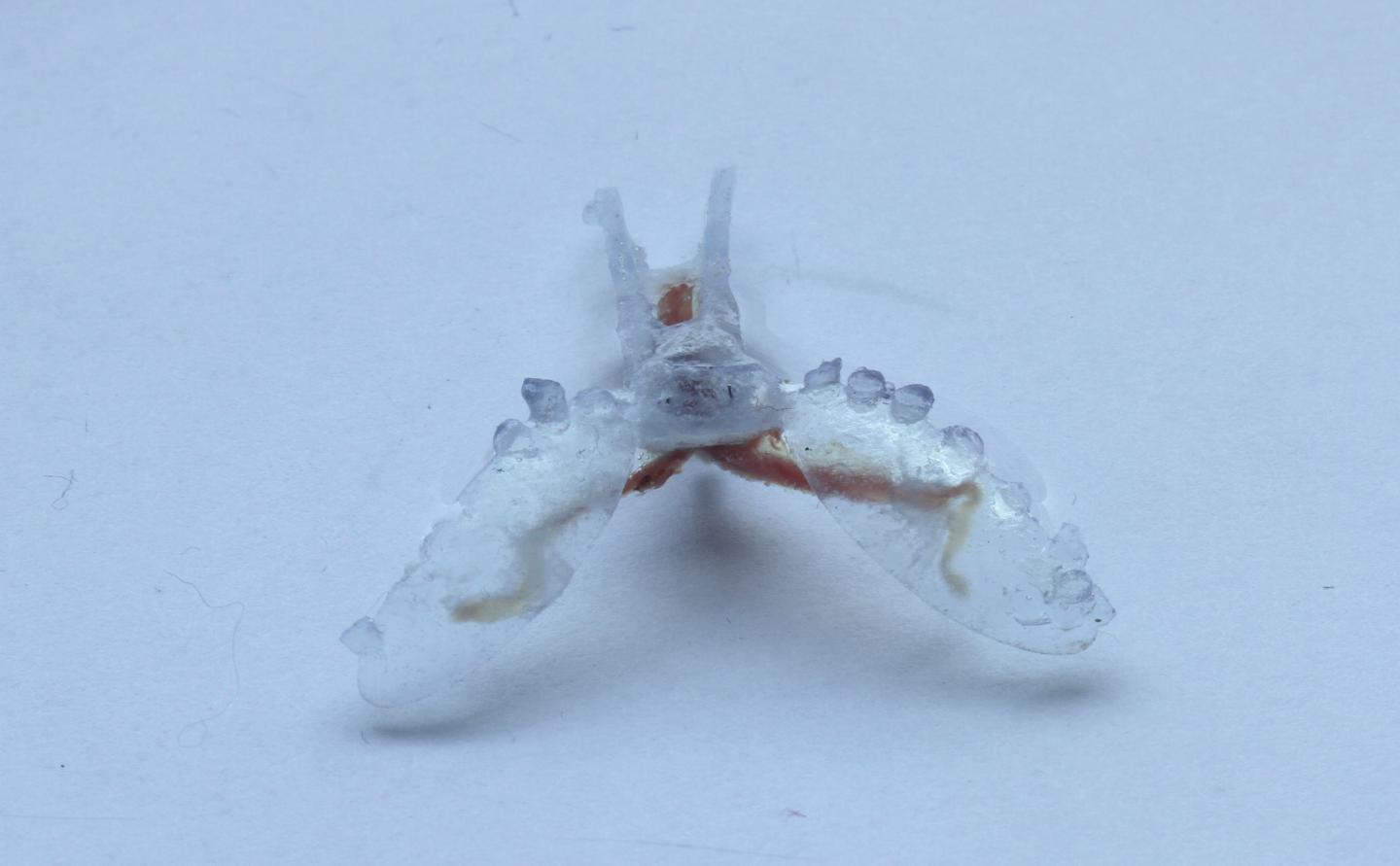
This 3D-printed crawling robot is made of sea slug body parts
Bio-inspired robots aren’t new, but robots comprised of animal parts are.
Now, researchers from Case Western Reserve University have combined sea slug tissue with flexible 3D-printed components to create “biohybrid” robots that crawl like sea turtles on the beach.
The team took muscle from the slug’s mouth in order to make the robot move. While this capability is currently controlled by an external electrical field, the team intends to have future versions include ganglia, bundles of neurons and nerves that normally conduct signals to the muscle as the slug feeds, to organically control the bot.
The researchers manipulated collagen from the slug’s skin to create an organic scaffold to be tested in new versions of the robot.

The robotic creation was developed with an idea that in the future, swarms of biohybrid robots could be released to carry out tasks like locating the source of a toxic leak in a pond, or searching the ocean floor for a black box flight data recorder — a process that could be long and grueling, wearing down the battery life of ordinary robots.
“We’re building a living machine–a biohybrid robot that’s not completely organic–yet,” said Victoria Webster, a PhD student who is leading the research. Webster will discuss mining the sea slug for materials and constructing the hybrid, which is a little under 2 inches long, at the Living Machines conference in Edinburgh, Scotland, this week.
Webster, along with Roger Quinn, the Arthur P. Armington Professor of Engineering and director of Case Western Reserve’s Biologically Inspired Robotics Laboratory and fellow engineers, combined materials from a California sea slug with 3D-printed parts to create a robot capable of managing tasks than that an animal or ordinary man-made robot couldn’t.
The researchers chose the sea slug because of its durability. Sea slugs can withstand changes in temperature, salinity and more as Pacific Ocean tides shift its environment between deep water and shallow pools, and compared to mammal and bird muscles, the slug’s are much more adaptable.
“We want the robots to be compliant, to interact with the environment,” said Webster. “One of the problems with traditional robotics, especially on the small scale, is that actuators–the units that provide movement–tend to be rigid.”
Since muscle cells can carry their own fuel (nutrients around them), are soft, safe, and have a high power-to-weight ratio, the researchers deemed them a perfect choice.
Originally, they tried using muscle cells but opted to use the entire muscle from the mouth area, or buccal mass, since it had optimal structure and form to provide the function and strength needed.
The team’s first biohybrid robots had the buccal muscle, which naturally has two “arms,” connected to the robots printed polymer arms and body. So, the robot moved when the buccal muscle contracted and released, swinging its arms back and forth. In early testing, the bot pulled itself about 0.4 centimeters per minute.
The team is getting ready to test organic versions and new body shapes, which will be designed to produce more efficient movement.
According to the researchers, if completely organic robots prove to be an effective resource, swarms of them could be released at sea, in a pond, or a remote piece of land without worrying if they’re even recovered. The robots would be inexpensive to produce and wouldn’t pollute the location with metals and battery chemicals, but instead would be eaten or degrade into compost.

Comments are closed, but trackbacks and pingbacks are open.